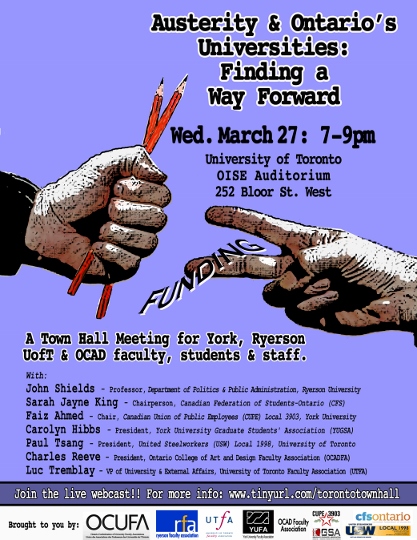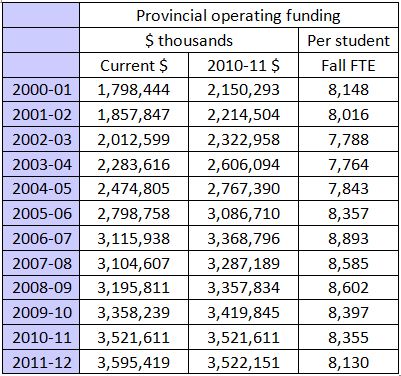On February 19, 2013, new Ontario Premier Kathleen Wynne presented her first Speech from the Throne, outlining the priorities of her government. As expected, the speech contained a heavy focus on deficit reduction, economic growth, and employment.
The speech signaled that the government will continue to pursue austerity policies, but reflected a softer approach to controlling the deficit. In particular, it emphasized the need to work respectfully with the public sector to achieve the government’s spending goals. Nevertheless, it is clear that the government still expects compensation restraint. From the speech:
Your government will create a better process to ensure that all its partners, including those within the public sector, are treated with respect.
But it will call upon these same partners to work with this new government so we can journey forward, boldly, as one…
…It will also introduce a balanced approach to balancing the budget so that all parties can work together to find savings without impacting the services on which people rely.
However, your new government understands that Ontario’s true potential cannot be reached through austerity alone.
And so it will continue to implement recommendations found in the Drummond Report, including work to evaluate corporate tax compliance.
The speech continues the government’s commitment to reducing the deficit, conforming broadly to the goals outlined in the Drummond Report:
Your new government will restrain program spending to reduce Ontario’s debt-to-GDP ratio, while recommitting itself to eliminating the deficit by 2017-2018.
And after that, it will restrict overall spending increases to one per cent below GDP growth until the province’s debt-to-GDP ratio returns to the pre-recession level of 27 per cent.
It will also introduce a balanced approach to balancing the budget so that all parties can work together to find savings without impacting the services on which people rely.
The speech also signaled a desire to influence labour relations in Ontario, and perhaps introduce reforms to the current arbitration system:
As your government moves forward, Ontario’s labour force will be treated fairly and with respect.
It will sit down with its partners across all sectors to build a sustainable model for wage negotiation, respectful of both collective bargaining and a fair and transparent interest arbitration process, so that the brightness of our shared future is not clouded by the indisputable economic realities of our time.
It also appears that universities are envisioned as part of Ontario’s employment strategy:
To address the serious issue of youth unemployment, your government will join forces with high school educators, colleges, universities, training partners and employers to establish opportunities for young people to enhance their skills; find placements, internships and co-op programs; and gain valuable, real world experience.
A renewed partnership with business, educational institutions, not-for-profits and labour will be at the heart of your government’s plans to build a modern, competitive and dynamic economy.
In addition, the speech announced the continuation of the 30 Per Cent Off Ontario Tuition Grant and the desire to expand the availability of French postsecondary programs in central and southwestern Ontario.
It should be noted that the throne speech does not contain specific policies, but is rather a general statement of the government’s directions. Actual policies should become more clear in the upcoming budget. OCUFA will be tracking the government’s policy initiatives closely, and intervening to ensure that collective bargaining is protected and that all activities of the university – inquiry and critical thought, not just job training – are funded for success.






